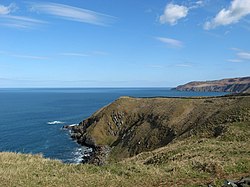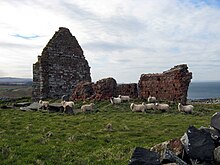Siccar Point | |
|---|---|
 The point seen from the west | |
Location in the Scottish Borders | |
| Coordinates: 55°55′54″N2°18′04″W / 55.931588°N 2.3012°W | |
| Grid position | NT812709 |
| Offshore water bodies | North Sea |
| Age | Silurian, Devonian |
| Designation | IUGS Geological Heritage Site |
Siccar Point is a rocky promontory in the county of Berwickshire on the east coast of Scotland. It is famous in the history of geology for Hutton's Unconformity found in 1788, which James Hutton regarded as conclusive proof of his uniformitarian theory of geological development.





